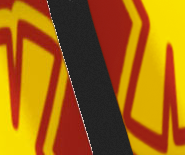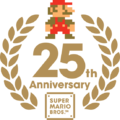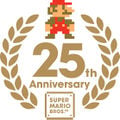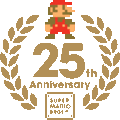User:Shokora/Help:Image: Difference between revisions
No edit summary |
|||
| Line 133: | Line 133: | ||
| | | | ||
*Links to a page title on the wiki. | *Links to a page title on the wiki. | ||
*Using only <tt>link=</tt> (without specifying a page) will de-link the image, and clicking on it will do nothing. This is ideal for official [[MarioWiki:Notice templates|notice templates]] which use an image as part of the template. For example, | *Using only <tt>link=</tt> (without specifying a page) will de-link the image, and clicking on it will do nothing. This is ideal for official [[MarioWiki:Notice templates|notice templates]] which use an image as part of the template. For example, {{tem|warning}} includes a delinked image. Having a clickable image which leads to a file page would be unnecessary here, as the template serves as a formal notice when issued to users. | ||
|- | |- | ||
|[[File:Mushroom Example.png|75px|left|border|Click here!]] | |[[File:Mushroom Example.png|75px|left|border|Click here!]] | ||
| Line 145: | Line 145: | ||
*This will create a thumbnail of the image, surrounded by a solid border. | *This will create a thumbnail of the image, surrounded by a solid border. | ||
*The http://www.mariowiki.com/skins/common/images/magnify-clip.png sign signifies that the image may be displayed at a modified size, and it could be enlarged by clicking on this symbol. | *The http://www.mariowiki.com/skins/common/images/magnify-clip.png sign signifies that the image may be displayed at a modified size, and it could be enlarged by clicking on this symbol. | ||
*The side the page the image is placed on can be alternated between <tt>left</tt>, <tt>right</tt> or <tt>center</tt>. "Right" is the default when using a thumbnail. | *The side the page the image is placed on can be alternated between <tt>left</tt>, <tt>right</tt> or <tt>center</tt>. "Right" is the default when using a thumbnail. | ||
*If the image is transparent, a thumbnail will not show the page's background (such those seen on [[The 'Shroom:About|'Shroom]] articles). Instead, one of the earlier methods of displaying an image should be used if necessary. | |||
|- | |- | ||
|[[File:Mushroom Example.png|thumb|left|Caption.]] | |[[File:Mushroom Example.png|thumb|left|Caption.]] | ||
| Line 182: | Line 183: | ||
*Using the {{tem|plainlink}} template can remove the "http://www.mariowiki.com/images/6/67/External_link.png" beside the image (which will show by default when linking images using a URL). | *Using the {{tem|plainlink}} template can remove the "http://www.mariowiki.com/images/6/67/External_link.png" beside the image (which will show by default when linking images using a URL). | ||
|} | |} | ||
===Using multiple images together=== | ===Using multiple images together=== | ||
Revision as of 18:57, August 30, 2016
Template:Seealso An image provides a visual example of an article subject. Images can be uploaded to the Super Mario Wiki by autoconfirmed users. Anonymous users who are not logged in or users who are not autoconfirmed will not be able to upload. This page goes into detail on image standards, uploading an image. and what users are able to do with an image once it has been uploaded.
The file description page
Choosing an image
Found an image and think it has a place here? Before it is uploaded, there are a few things which may need to be considered. At the Super Mario Wiki, we have several standards which apply to all images. Each standard is explained in the sections below.
What to avoid
First things first, please do not attempt to upload images which include the following, as they will be deleted on sight.
- Inappropriate or profane content, such as nudity, blood or violent weapons.
- Personal information.
- Potentially libelous content (that is, content which is made to disrupt or make fun of other users).
Uploading inappropriate images is a level four offense, and the uploader may be permabanned.
The following images are not permitted for use on the wiki's articles. Unless such images are claimed as a personal image, they will be deleted.
- Fanmade, or "fake" images intended to be used on articles. Remember that we only cover official Mario content.
- Being a duplicate or lower-quality version of an existing file.
- Images that aren't vaguely related to the Mario franchise. For example; uploading picture of a real life dog and putting it on the dog article.
Cropping sections of an image
File types
First, we need to check if the file type (sometimes referred as an extension) is acceptable to upload. The wiki currently accepts four different file types for images. You can what find out what file type an image is by looking at the letters after the dot in the file name. These letters may appear either capitals or lowercase. The Super Mario Wiki accepts the following; PNG, JPG (or JPEG), GIF and SVG. The difference of each type is explained below.
- JPG/JPEG (Joint Photographic Experts Group) - These file types are generally
- PNG (Portable Networks Graphics) -
- GIF (Graphic Interchange Format) -
- SVG (Scalable Vector Graphics) -
Any image extensions other than these cannot be uploaded here. When uploading a new version of a file, remember that they must be the same file type. See below for further info. The wiki also accepts OGG and OGA extensions, which are for media files.
Image transparency

Transparency is applied to images in order to get rid of an existing background, such as a white square which surrounds the object of an image. JPEG files do not support transparency. PNGs do, but we have a standard which must be followed. During [month] 2011, a proposal passed which restricts giving transparency to artworks unless it has no visible outline or pixelation when displayed at full size against a black background. Any poor transparency will be reverted. It is also not acceptable to replace JPG/JPEG artworks with PNGs which have been modified with transparency. This doesn't apply to PNG artworks which already have transparency when retrieved from an official source, such as a press kit - this is known as "official transparency".
Sprites and models
Game sprites are graphics which can be moved on screen and be made to look like an independent object. We recommend giving transparency to sprites, as the aforementioned transparency guidelines only applies to artworks. Sprites usually have larger and less detailed pixels; thus able to give perfect transparency.
Sprites preferably should be in their original sizes, rather than modified sizes. Sometimes, you may come across a situation where a sprite is so small that you may feel the need to upload it at an enlarged size. We advise you to keep the sprites at the original size, and enlarge the thumbnail on the article if necessary. However, this can usually cause the sprite to blur. If this is a problem, converting the file to SVG format will ideally result in no loss of quality when enlarged. In most cases, sprites should preferably be tightly cropped (leaving no empty space around the border).
File size
Another point that should be confirmed before uploading is the size of the image. As seen on the image use policy, files should not exceed five megabytes in file size. The wiki's limit is actually ten, but it is still strongly advised that you keep to five or less. Image dimensions are restricted to no more than 5000 pixels in width or height. An image has cannot exceed an area of 12.5 million pixels (including transparent areas), as the file won't be able to be viewed through a thumbnail after being uploaded (the thumbnail error does not apply to JPEGs). If you have found an image that you wish to upload, but it goes beyond these limits, then you may need to optimize it.
- If an images' file size is too large, then there is the option to compress it. This involves getting rid of unnecessary bytes from the file to make it smaller, without affecting the image dimensions or quality. Programs like GIMP and Photoshop automatically compress an image after being saved. There are also some programs available which are made especially for compressing images, such as PNG Monster. However, unlike lossless formats (PNG and GIF), JPEG is lossy, meaning that it sacrifices quality if compressed. Likewise, we advise you to not attempt to compress JPEGs.
- If an images' dimensions are too large, then you may scale it down to a more appropriate size. Programs like GIMP make scaling easy. If you are scaling to avoid the aforementioned thumbnail error, then remember that the width and height of the image should multiply with a result less than 12.5 million. Also, please keep the dimensions below 5000 pixels in width or height.
File names
And finally, the last thing we need to remember before uploading is giving the file an appropriate name. As the image use policy states, you should give a name which describes the image content. This can include the game where the image was taken from, as well as a short descriptive title which tells us what the image is showing. For example; NSMBU Bowser Artwork.png is clear and descriptive, being an ideal file name. Unless said content is in another language, such as the German Club Nintendo comics or Japanese names, please use English for file names, so everyone can understand. We advise against foreign characters and symbols, such as é, ü, [Heart], etc. Some users may find these difficult to type, and they may even appear as unicode, making the file even more difficult to understand and use. In short, please avoid vague, non-descriptive and otherwise confusing names for images. If you feel that an image could do with a better name, you are welcome to move the image title. See below for more info.
Moving an image title
If necessary, a file name can be moved to a more suitable title by autoconfirmed users. This should be carried out when when a name is unspecific or inappropriate. Moving an image title is much like moving a page. Autoconfirmed users will find a "move" tab at the top of the page. Clicking this will open a page where you will be [TO FINISH]
After the title has been moved, a redirect is created (like with moving a page). Articles using the old version of the file name can still display the image, but it is recommended that all of the links are updated. On the new filename page, check the "What links here" section to view which pages are using the file.
When all links have been updated, the redirect can be tagged with {{Delete|File moved}}, and it will soon be deleted by an administrator.
Uploading an image
Uploading an image to the website means that it can be used on articles within a thumbnail or in a gallery. Images can also be linked externally, but if an image is to be used on an article or a then it must be uploaded. The following instructions outline the recommendations and basics when it comes to uploading an image.
Searching for duplicates
Before uploading, it is usually best to search for an identical or higher quality version that may already exist on the wiki. The best way to check is to take a look at the article/s that the image would be used on. Another good place to check is the gallery for the respective game that the image comes from. For example, Gallery:Super Mario 64 will contain many images from the game Super Mario 64. If you are unable to find it in either of these places, browse the image category. For example; Category:Super Mario 64 Images. If you find a similar image and the version you wish to upload is better, then it should be reuploaded. See below for more details.
If you can't find a similar image, then you are welcome to upload it as a new file.
How to upload
To upload an image to the site, first go to Special:Upload. You will see a form with many fields that must be correctly filled amongst three different sections. The first section is called "Source file", and it is where you can specify a file to upload. Here, users can choose to either upload from their computer or from a publicly accessible URL. The next section is called "File description". The first field in this section is the destination filename, which is what the name of the image will be when it has been uploaded. When you have selected a file from your computer, the filename will automatically appear in the field. The name can be adjusted if necessary.
One field down is the file summary, which is pre-coded with the {{aboutfile}} template. The usage of the template is optional, but it is recommended. Each of the five parameters of the template describes the file in a different way. They are:
- Subject - Give a brief description on what the file shows.
- Source - Where you found the file. This could refer to a website, method of obtaining (eg. YouTube screenshot), or the game it came from (if this wasn't already specified in the description.
- Artist - Here, the uploader can credit the person who created/scanned/procured the image.
- Edits - If the image has been edited from the source version, note the changes which were made.
An example code is as follows:
If you do not wish to use Aboutfile, then please remove the coding. Repeatedly leaving te tenplate uncoded and left on the file page is considered a minor offense, and a notice may be issued.
In the same field as Aboutfile, users can also add suitable image categories. An image should be categorized by the game it appears in (if applicable). For example, [[:Category:Super Mario World Images|]]. If the image is from a beta version of a game, add Category:Beta Images as well as the game category. Asides from categories, a suitable notice template can also be applied. They can be placed either above or below Aboutfile. A notice template's purpose is to bring attention to a certain problem or situation. Some types of files that may require a notice template include:
- Personal images - An image not intended for use on the wiki's articles, but rather your userspace, should be tagged with {{personal-image|Your username}}. If the image is to be used in a signature, type {{personal-image-sig|Your username}}.
- Issues with image quality - Sometimes, the best image available is of poor quality. This may be because it's blurry, unclear, has washed-out or incorrect coloring, or simply too small (an exception to official game sprites). In such cases, {{image-quality}} can be tagged on the file page, which requests for a better quality version of the image to be uploaded.
- Not unused - Images which are uploaded and linked externally, usually through a user's CSS, will appear as unused on the file page. To avoid misunderstandings with other users, TEMPLATE can be used.
- Imagemap -
Directly below the Aboutfile field is the licensing drop-down menu. Here, you can select an appropriate license to tag the image with. Every file should have a license, the reason being is that most images are copyrighted by Nintendo,........................
If you make a mistake with anything in the aboutfile field or the image license when uploading, remember that they can be modified by clicking the "edit" tab at the top of the file page. The next section of the form is the "Upload options". There are two checkboxes, the first asks if you wish to add the file to your watchlist. This means that if the file is modified, the page will appear bolded on recent changes and will be displayed on your watchlist. The second checkbox asks if you want to ignore any "warnings" which may appear when trying to upload a file. These warnings may be seen when an exact duplicate already exists on the wiki, or if the filename is already being used on an existing file. Generally, it is recommended that this is remained unchecked, unless the duplicate upload is intentional for whatever reason. When the warning is not bypassed, users will se
So, when you have completed the form, you are now ready to upload. Simply click on the "Upload file" link, and wait for the page to load. Depending on how large the file size is, the amount of time it takes to upload will vary. Once it has been uploaded, you can go and put it on an article.
Reuploading
If you have found a higher quality or more suitable version of an image already on the wiki, then we recommend that you perform a reupload. This involves overwriting an image with a newer version. To successfully reupload an image, the file type of both the old and new version of the file must match. If an image is protected, the page content and image can only be modified/overwritten by an administrator.
Every (unprotected) file page has a link near the bottom which reads "Upload a new version of this file". The procedure that follows is much like uploading a file as normal, except that the "Licensing" drop down menu does not appear. The main field where the Aboutfile code is seen should be used to describe the file changes. Whatever is filled here will only appear in the file history, not the file page itself. So filling out Aboutfile like you would with a new upload is not necessary. Instead, please leave a short description of the file changes. For example; "larger" or "better quality". When this has been done, click the "Upload file" link and wait for the page to load.
On most browsers, the new image may not immediately overwrite the old one. What usually appears is the old image with the dimensions of the newer one. Immediately after uploading, you should always clear the cache by refreshing the page, so the new version of the image appears. It would also be a good idea to refresh a few of the article pages where the image is placed on.
Replacing an image
An image may be replaced when a better quality image has been uploaded as a separate file. Usually, a file can just be reuploaded, but as aforementioned, the file types must match. You can't reupload an existing PNG with a JPEG for example. If you have obtained a better quality PNG of an existing JPEG file, please don't switch the PNG to JPEG just to suit a reupload, as this will lower the quality and any (official) transparency will be lost. Instead, you can upload the better quality PNG version as a new file. This is known as replacing.
To correctly replace an image, you should check what pages the old file is being used on by looking at the "What links here" section of the file page. Go through the articles listed and replace the old image with the newer version by changing the file name on the articles. If the old file links to a userspace page other than your own, then please disregard it. It is up to users to maintain their own page and update the file link. Please also disregard files which link to talk pages. If an article is protected, then please contact an administrator or post a comment in this forum thread for assistance. When the old file has no more articles linking to it, then it may be tagged for deletion. You can do this by putting {{Delete|Replaced}} on the file page. It may also be a good idea to provide a link to the newer file, so the administrator who is deleting the file knows what it's being replaced by.
Using an image
Our articles just wouldn't be the same without the thousands of images uploaded to the wiki. As an uploader, you would be the one expected to use any images which have been uploaded by you, so it is crucial to know how to do so correctly. Even before uploading, you should be thinking about where the images could be used. Images related to the Mario series should primarily be placed on the relevant article/s relating to the image content. As well as this, the image may also go on the gallery for the character or game where the image comes from. An image may also be uploaded for use on a template or MarioWiki page, provided that the image in question is relevant to the content (you may need admin-approval before doing so). If your image isn't intended for usage on the main project, but rather on your userpage or in your signature, then you must tag it with {{Personal-image|Your Username}}.
Using a single image on a page
| Result | Wiki coding used | Notes |
|---|---|---|
| [[File:Mushroom Example.png|75px|left]] |
| |
| [[File:Mushroom Example.png|75px|left|Click here!]] |
| |
| [[File:Mushroom Example.png|75px|left|Click here!|link=Super Mushroom]] |
| |
| [[File:Mushroom Example.png|75px|border|left|Click here!]] |
| |
| [[File:Mushroom Example.png|75px|thumb|left]] |
| |
| [[File:Mushroom Example.png|75px|thumb|left|Caption.]] |
| |
| [[File:Mushroom Example.png|50px|thumb|left|Caption.]] |
| |
| [[File:Mushroom Example.png|frame|left|Caption.]] |
| |

|
http://www.mariowiki.com/images/0/08/Mushroom_Example.png |
|

|
[http://www.mariowiki.com/Super_Mushroom http://www.mariowiki.com/images/0/08/Mushroom_Example.png] |
|
| Template:Plainlink | {{plainlink|1=[http://www.mariowiki.com/Super_Mushroom http://www.mariowiki.com/images/0/08/Mushroom_Example.png]}} |
|
Using multiple images together
| Result | Wiki coding used | Notes |
|---|---|---|
|
{{multiframe |
| |
|
{{multiframe |
| |
Caption. |
{{multiframe |
|
|
{{multiframe |
| |
|
{{multiple image |
| |
|
{{multiple image |
| |
|
{{multiple image |
|
Gallery pages
- Characters
Image maps
File types
The exact same image has been converted into each of the four file types and placed within a gallery below. Their visual quality varies.
Unused images
Sometimes, an image may be left unused. Usually this is because a user forgot to tag it for deletion after it was replaced, or it may have simply been forgotten. All unused files on the wiki can be seen at Special:UnusedFiles.
Deleting and undeleting images
Past revisions of an image are kept archived on the file page. Administrators can delete past revisions of an image to hide inappropriate content, personal information or potentially libelous information.
Sometimes, an image may be deleted by mistake, such as through a misunderstanding with another user. In cases like these, an image may be undeleted by an administrator using the Special:Undelete tool.

 sign signifies that the image may be displayed at a modified size, and it could be enlarged by clicking on this symbol.
sign signifies that the image may be displayed at a modified size, and it could be enlarged by clicking on this symbol.
 " beside the image (which will show by default when linking images using a URL).
" beside the image (which will show by default when linking images using a URL).


